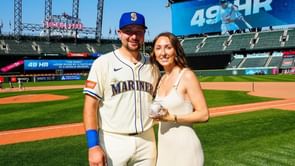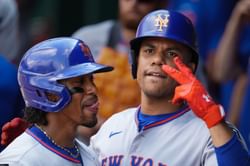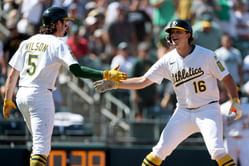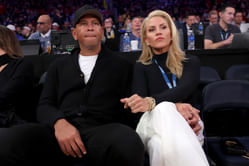
In Major League Baseball (MLB), the assessment of player performance relies on a variety of statistics that showcase their contributions to the team. Important metrics include hits, runs batted in (RBI), and batting average. A hit is logged when a batter successfully reaches base after hitting the ball, while RBI indicates the number of runs a player brings in through their hitting efforts.
Alongside these traditional measurements, advanced statistics have become increasingly popular recently, offering more comprehensive insights into player performance. One notable metric within this is slugging percentage (SLG).
SLG in baseball
In baseball, SLG stands for slugging percentage. It is a statistic used to measure a player's power-hitting ability. SLG is calculated by taking the total number of bases a player records from hits and dividing it by their total at-bats.
SLG=At-Bats/Total Bases
Total bases are calculated by assigning a value to each type of hit: a single is worth one base, a double is worth two bases, a triple is worth three bases, and a home run is worth four bases. For example, if a player has 10 singles, 5 doubles, 3 triples, and 2 home runs, their total bases would be calculated as follows:
Singles: 10 x 1 = 10
Doubles: 5 x 2 = 10
Triples: 3 x 3 = 9
Home Runs: 2 x 4 = 8
Total Bases = 10 + 10 + 9 + 8 = 37
If the player had 100 at-bats, the SLG would be: SLG=100/37=0.370
A greater slugging percentage suggests that a player possesses a stronger capability to hit for power, thus enhancing the team’s offensive effectiveness. SLG is frequently analyzed alongside other metrics, such as on-base percentage (OBP), to assess a player's complete offensive contribution.
What is the difference between OPS and SLG in baseball?
OBP in MLB
In Major League Baseball (MLB), On-Base Percentage (OBP) is an essential metric that assesses a player's capability to reach base, offering a more comprehensive understanding of their offensive impact compared to batting average by itself. OBP considers not only hits but also walks and hit-by-pitches, highlighting a player’s overall in getting on base.
Calculation of OBP
The formula for calculating the On-Base Percentage is:
OBP=Hits+Walks+Hit-by-Pitches/At-Bats+Walks+Hit-by-Pitches+Sacrifice Flies
Hits: Total successful hits by the player.
Walks: Total number of times the player has walked (not including intentional walks).
Hit-by-Pitches: Times the player has been hit by a pitch and awarded first base.
At-Bats: Total number of official at-bats, excluding walks, hit-by-pitches, and sacrifice flies.
Sacrifice Flies: Fly balls that result in a run being scored but do not count as an at-bat.
FAQs on SLG in MLB
A. On-base percentage (OBP) measures how often a player reaches base, considering hits, walks, and hit-by-pitches.
A. OBP focuses on a player’s ability to get on base, while SLG evaluates a player’s power and ability to hit for extra bases.
A. Runs batted in (RBIs) measure the number of runs a player drives in through their hitting, reflecting their ability to contribute to the team’s scoring.
A. A high slugging percentage indicates that a player has a strong ability to hit for power, contributing significantly to their team's offense.
A. Total bases count the cumulative number of bases a player achieves from hits, where singles count as one base, doubles as two, triples as three, and home runs as four.









